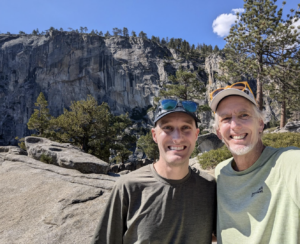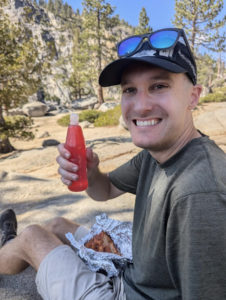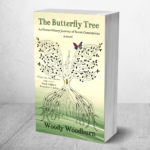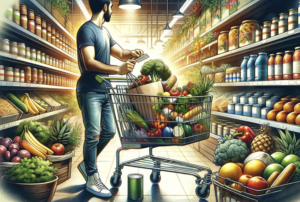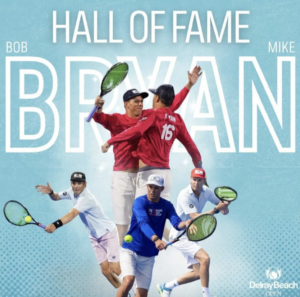Woody’s new novel “The Butterfly Tree” is available at Amazon (click here), other online retailers, and orderable at all bookshops.
*
Once upon a time, an 8-year-old boy and his father hiked to the summit of Yosemite Falls, the fifth-highest waterfall on the planet and record holder in North America with a total drop of 2,245 feet.
Afterwards, as he was being tucked into bed that night, the weary-but-proud boy smiled like it was his birthday and Christmas and the first day of summer all wrapped into one, and told his climbing companion: “This was the best day of my life.”
There is, of course, no single “best” day; no day that is the ultimate masterpiece above all others. Rather, there are days so perfect and special and memorable that they merit a hue in The Best Days Ever Rainbow.
This day had been a radiant shade of orange, the boy’s favorite color; or perhaps the brilliant blue of the cloud-dotted sky that afternoon; better yet, it was red like the cherry Squeezit the boy drank in celebration at the summit as if it were champagne on New Year’s Eve at midnight.
A quarter of a century later, precisely and recently, the boy and the father returned to Yosemite Falls to try and relive that Squeezit red red-letter day. En route, poet William Wordsworth’s worthy words came to mind: “The Child is father of the Man.”
In echo, Joe-El, father of Superman, says of his only child: “The son becomes the father, and the father the son.” So it was on this mountainside.
The first time they had climbed up, Up, UP the steep and rugged four-mile trail that would challenge a sure-hoofed Bighorn sheep, the father carried a backpack stuffed heavy with provisions for them both.
This time it was the boy, now a man of 6-foot-3 with broad and strong shoulders, who carried the full load of drinks and food. Time stutters and yesterday is today, and today is tomorrow, and in my eyes my son came into simultaneous focus as a small boy and a grown adult.
The Child further became father of this Man by leading our way on the trail. When a rising step was extra high, or the footing precarious, it was now the son who held his father’s hand to provide steadying balance and safety. Too, it was the son who made sure the father took consistent breaks to stay hydrated.
“The journey,” wrote another poet, Miguel de Cervantes, “is better than the inn.” Indeed, the ascending journey – and descending – was the best part of the day: talking one-on-one for seven hours, for a hundred switchbacks up and a hundred more down, all with no cell phones, no distractions, nobody but us, Child and Man.
Yet, with apologies to Cervantes, the inn – the summit – shared top billing. As with the first time we reached the picturesque peak, the son and father again enjoyed a picnic lunch of leftover pepperoni pizza, homemade chocolate chip cookies, and a cherry Squeezit for the boy and a Guinness for the father – and, this time, an extra Irish pint for the grown son.
Twenty-five years ago, I wrote a column about climbing Yosemite Falls with this prescient passage: “In thirty years, or perhaps forty, would these two come back here, this time with The Mountain Boy’s hand doing the holding and the steadying and the helping as the grown son and his aging father rise up the mountain again? As Hemingway’s closing words in The Sun Also Rises beautifully put it: ‘Isn’t it pretty to think so?’ ”
It was more than pretty. It was beautiful. Perfect. A bookend cherry Squeezit red masterpiece day.
* * *
Essay copyrights Woody Woodburn
Woody’s new novel “The Butterfly Tree” is now available in paperback and eBook at Amazon (click here), other online bookstores, and is orderable at all bookshops.
*
Woody writes a weekly column for The Ventura County Star and can be contacted at WoodyWriter@gmail.com. Follow him on Twitter and Instagram at @woodywoodburn.


